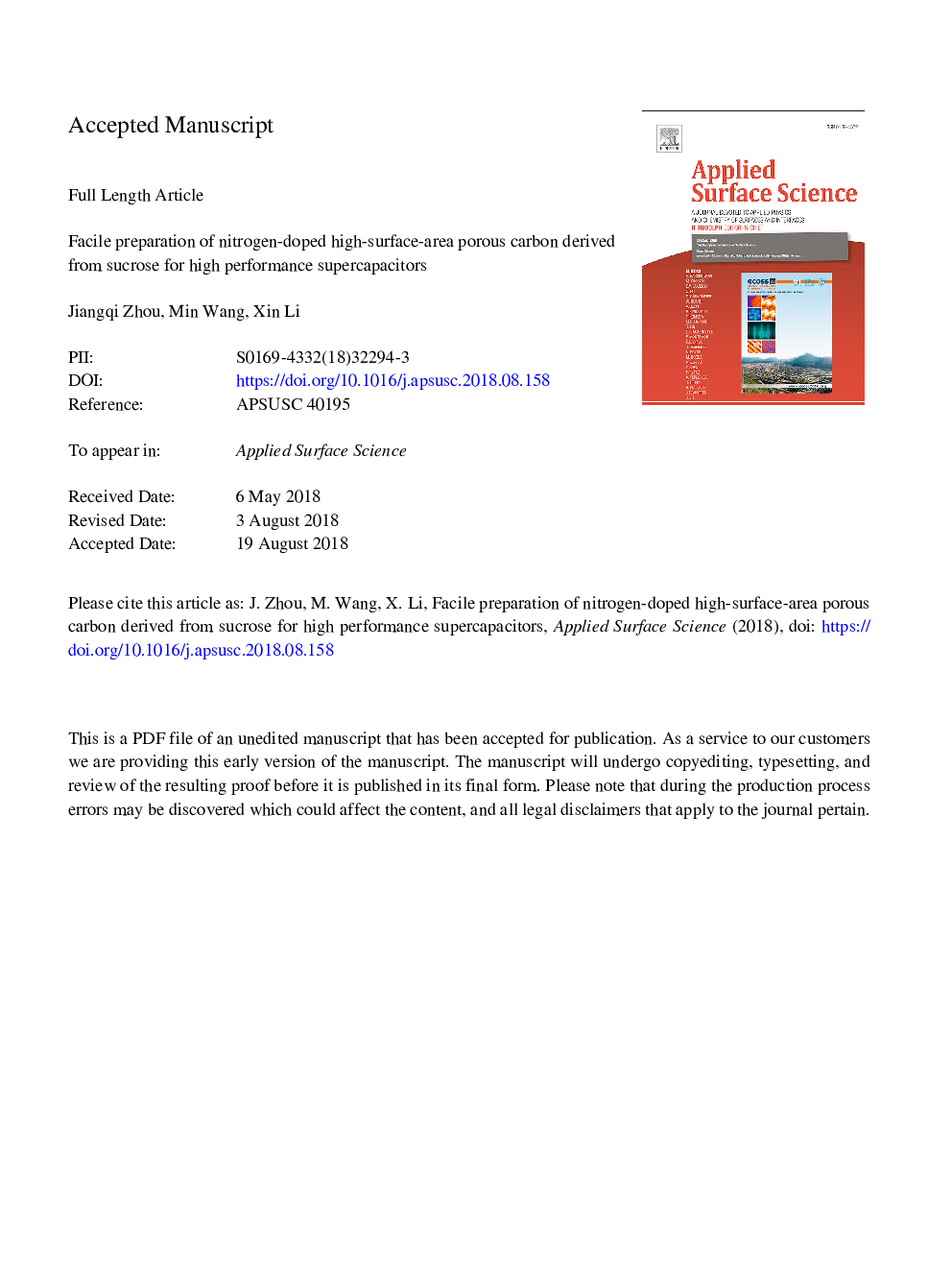| Article ID | Journal | Published Year | Pages | File Type |
|---|---|---|---|---|
| 11006462 | Applied Surface Science | 2018 | 35 Pages |
Abstract
We propose a simple strategy that combines polymerization with chemical activation to prepare a new high-surface-area nitrogen-doped porous carbon (SU-NPC) using sucrose as a carbon precursor, urea as a nitrogen precursor and KOH as an activation reagent. Additionally, this method avoids the time-consuming and complex hydrothermal treatment and template method of traditional approaches. To further optimize the performance, we investigated the relationship between the structure of the SU-NPC-X (X is the activation temperature) and its electrochemical performance at different activation temperatures in detail. The as-prepared SU-NPC-750 not only featured a large specific surface area of 1751â¯m2â¯gâ1 with a microporous network but also possessed a 5.96% nitrogen content. In 6â¯M KOH, the SU-NPC-750 displayed the highest specific capacitance of 335Fâ¯gâ1 at 1â¯A gâ1 among all previously reported sucrose-derived porous carbon. Meanwhile, the SU-NPC-750 presents an outstanding rate performance with a 65% capacitance retention at 30â¯A gâ1 and an excellent cycling stability with an approximately 95.5% capacitance retention over 10,000 cycles. Moreover, the as-assembled symmetrical capacitor showed a high energy density of 14.1â¯Whâ¯kgâ1. Therefore, the porous carbon materials described in this study are promising candidate electrode materials for supercapacitors.
Related Topics
Physical Sciences and Engineering
Chemistry
Physical and Theoretical Chemistry
Authors
Jiangqi Zhou, Min Wang, Xin Li,
